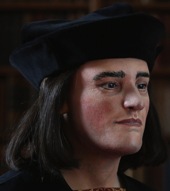Baptism of William Shakespeare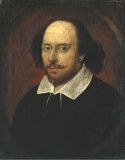 at Holy Trinity Church in Stratford on Avon. He was the third child of John Shakespeare and his wife Mary Arden. His exact birthday is not known, probably either 21, 22 or 23 April. In the 18th century the story became wide-spread that he was born on 23 April, but there is no contemporary evidence supporting this assumption.
at Holy Trinity Church in Stratford on Avon. He was the third child of John Shakespeare and his wife Mary Arden. His exact birthday is not known, probably either 21, 22 or 23 April. In the 18th century the story became wide-spread that he was born on 23 April, but there is no contemporary evidence supporting this assumption.
William became later the famous playwright, who to a certain extent is responsible for the bad reputation Richard III “enjoys” to this day. We must never forget that he wrote a play for the theatre that had to be riveting enough to get ‘bums on seats’, his intention was not to write a historian’s essay. By all accounts, Richard III is not the only one who suffered this fate – Macbeth was apparently also a perfectly good man.
More information: Peter Holland, ‘Shakespeare, William (1564–1616)’, Oxford Dictionary of National Biography, Oxford University Press, 2004; online edn, Jan 2011.
Comments Off on 26 APRIL 1564
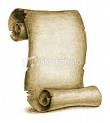 Battle of Hedgeley Moor, Northumberland. The Yorkist forces were led by John Neville, 1st Marquess of Montagu (brother of Richard Neville ‘The Kingmaker’), the Lancastrians by the Duke of Somerset, supported by Sir Ralph Percy, Lords Roos and Hungerford, and Sir Ralph Grey. The Lancastrian force soon gave way and fled, except for Sir Ralph Percy, who died in the battle.
Battle of Hedgeley Moor, Northumberland. The Yorkist forces were led by John Neville, 1st Marquess of Montagu (brother of Richard Neville ‘The Kingmaker’), the Lancastrians by the Duke of Somerset, supported by Sir Ralph Percy, Lords Roos and Hungerford, and Sir Ralph Grey. The Lancastrian force soon gave way and fled, except for Sir Ralph Percy, who died in the battle.
Comments Off on 25 APRIL 1464
Wedding of Henry VI and Margaret of Anjou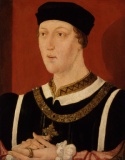
Comments Off on 23 APRIL 1445
Posted by: Michael Tags: Spain
 Birth of Queen Isabella I of Castile, the mother of Katherine of Aragon, Henry VIII’s first wife.
Birth of Queen Isabella I of Castile, the mother of Katherine of Aragon, Henry VIII’s first wife.
Isabella married on 19 October 1469 Ferdinand of Aragon. During Isabella’s reign the last Moorish kingdom in Spain, Granada, fell on 2 January 1492, ending centuries of peaceful religious co-existence between Muslims, Christians and Jews. In the same year, on 12 October 1492, Christopher Columbus discovered America.
Isabella died on 26 November 1504.
Comments Off on 22 APRIL 1451
Posted by: Michael Tags: Family
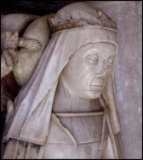 Birth of Elizabeth of York, sixth child and third daughter of Richard Plantagenet, 3rd Duke of York and Cecily Neville, in Rouen, Normandy. Married before February 1458 to John de la Pole, eldest son of William de la Pole, 1st Duke of Suffolk, and Alice Chaucer. Her eldest son John de la Pole, 1st Earl of Lincoln, was considered heir to the throne of Richard III after the death of Edward of Middleham.
Birth of Elizabeth of York, sixth child and third daughter of Richard Plantagenet, 3rd Duke of York and Cecily Neville, in Rouen, Normandy. Married before February 1458 to John de la Pole, eldest son of William de la Pole, 1st Duke of Suffolk, and Alice Chaucer. Her eldest son John de la Pole, 1st Earl of Lincoln, was considered heir to the throne of Richard III after the death of Edward of Middleham.
Comments Off on 22 APRIL 1444
 Death of Henry VII (Tudor) at Richmond Palace. Buried in Westminster Abbey.
Death of Henry VII (Tudor) at Richmond Palace. Buried in Westminster Abbey.
Comments Off on 21 APRIL 1509
Posted by: Michael Tags: Books
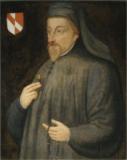 Geoffrey Chaucer tells the Canterbury Tales for the first time at the court of Richard II.
Geoffrey Chaucer tells the Canterbury Tales for the first time at the court of Richard II.
Comments Off on 17 APRIL 1397
 Birth of a short-lived child to George, duke of Clarence, and his wife, Isabel Neville, on a ship off Calais. Some sources say that it was a boy, others that it was a girl named Anne. This was their first child.
Birth of a short-lived child to George, duke of Clarence, and his wife, Isabel Neville, on a ship off Calais. Some sources say that it was a boy, others that it was a girl named Anne. This was their first child.
Comments Off on 16 APRIL 1470
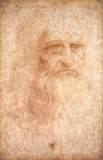 Birth of Leonardo da Vinci in Vinci near Florence. Famous as a painter and inventor, scientist and lots more.
Birth of Leonardo da Vinci in Vinci near Florence. Famous as a painter and inventor, scientist and lots more.
He was a contemporary of Richard III, being just six months older. He died on 2 May 1519.
Comments Off on 15 APRIL 1452
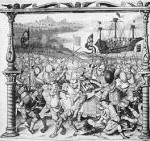 Battle of Barnet, Hertfordshire, defeat of Warwick and his brother Montagu, who both fell in the battle. Richard is said to have been in command of the vanguard.
Battle of Barnet, Hertfordshire, defeat of Warwick and his brother Montagu, who both fell in the battle. Richard is said to have been in command of the vanguard.
Read more about a possible different location for the battle here.
Comments Off on 14 APRIL 1471
 Battle of Hedgeley Moor, Northumberland. The Yorkist forces were led by John Neville, 1st Marquess of Montagu (brother of Richard Neville ‘The Kingmaker’), the Lancastrians by the Duke of Somerset, supported by Sir Ralph Percy, Lords Roos and Hungerford, and Sir Ralph Grey. The Lancastrian force soon gave way and fled, except for Sir Ralph Percy, who died in the battle.
Battle of Hedgeley Moor, Northumberland. The Yorkist forces were led by John Neville, 1st Marquess of Montagu (brother of Richard Neville ‘The Kingmaker’), the Lancastrians by the Duke of Somerset, supported by Sir Ralph Percy, Lords Roos and Hungerford, and Sir Ralph Grey. The Lancastrian force soon gave way and fled, except for Sir Ralph Percy, who died in the battle.







